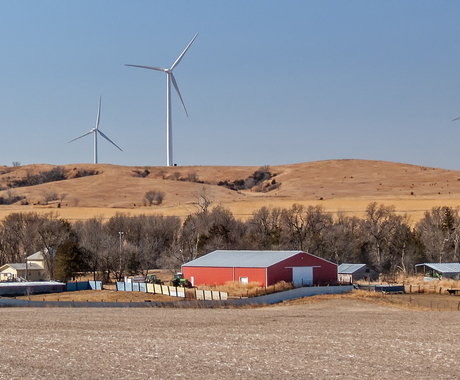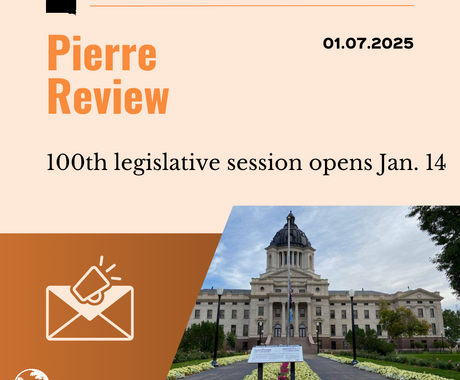This is the second in a series of blogs on carbon pipelines with the purpose of providing neutral, fact-based information.
Carbon pipelines are a contentious issue in the Midwest’s western region, where several pipeline routes are being proposed.
A pivotal point in that discussion centers on which level of government—federal, state, or local—has jurisdiction over certain developmental regulations. Below, we explore the responsibilities of each level of government and the current environments in Iowa, Nebraska, Minnesota, and South Dakota.
Federal
The federal government is responsible for setting the safety standards of all interstate pipelines. These standards are regulated by the Department of Transportation’s Pipeline and Hazardous Liquid Safety Administration. Regulations for pipelines are included in the hazardous liquid safety standards section of the Hazardous Liquid Pipeline Safety Act because they carry a dense phase liquid. States are allowed to set more stringent regulations if the pipeline is intrastate, so long as the minimum safety standards are met.
The Pipeline Safety Act (49 U.S.C. 60104e) does not allow the Secretary of Transportation to regulate the location or routing of a pipeline facility, leaving that decision to lower bodies of government.
According to a report done by the Congressional Research Service in 2008, Regulation of Carbon Dioxide sequestration pipelines: Jurisdictional Issues, the Federal Energy Regulatory Commission (FERC) and the Surface Transportation Board (STB) have both indicated in the past that they do not have jurisdiction over the rate and siting of carbon pipelines. The report also claimed that either agency could change their interpretations of existing law and implement federal regulations, however no federal oversight currently exists. The STB does have a role in hearing disputes over rates charged by a pipeline company, but this action hasn’t been executed.
Other Federal regulation does exist if a carbon pipeline company wants to develop on federally owned lands. To accomplish this they would have to acquire a permit from the Bureau of Land Management. Additionally, the project would have to undergo either an Environmental Impact Statement or an Environmental Assessment in accordance with the National Environmental Protection Act (NEPA).
State/ Local
Individual states have the right to regulate items not covered by federal pipeline safety law. Each state can have different processes and requirements. State law typically focuses on the routing of the pipelines and use of eminent domain, as well as other permitting conditions. It’s important to note that Iowa and South Dakota both have active bills in their respective Legislatures that could change how they use eminent domain and the resulting condemnation cases.
Iowa
In Iowa, permits are issued by the Iowa Utilities Board (IUB), which serves as the state’s utility regulator. The IUB has primary jurisdiction over the routing-siting of hazardous liquids pipelines. However, companies are required to “state the relationship” to the county’s zoning requirements. Currently counties can pass ordinances that include setback standards and require companies to submit a conditional-use permit application.
A lawsuit has been filed in response to Story and Shelby counties’ enactment of ordinances that outline requirements for the permitting process. The lawsuit claims the ordinances regulate the safety of the pipelines, which would illegally supersede federal law. Included in these ordinances are setback requirements for the routing of the pipeline. The court's decision will determine a county’s ability to preempt state and federal authority on that matter.
The IUB is able to issue a permit without granting eminent domain authority to a pipeline company. Once a permit is approved, if the request for eminent domain still exists, a series of hearings determines exactly what condemnation rights are granted.
Minnesota
Permitting in Minnesota is done exclusively through the Public Utilities Commission (PUC). In the first week of 2023, the PUC accepted Summit Carbon’s route permit application showing its authority to site the pipeline over the county's control. Without statewide authority, the permitting would have been done at a county level. Simultaneously, the PUC ordered an Environmental Impact Statement, which is the state’s most extensive environmental review.
The acceptance of this permit does not give Summit Carbon eminent domain authority. In Minnesota, carbon pipeline companies do not have a right to access eminent domain powers. To route the pipeline through the state, it must negotiate voluntary easements with landowners.
Nebraska
No legislation has been enacted that provides a permitting process at a state level in Nebraska. This leaves the responsibility of permitting to individual counties. Permits can cover everything that is not outlined in federal law, including the routing, construction mitigation, and abandoned pipelines.
While there is no regulation for the permitting of carbon pipelines, companies are still able to secure eminent domain power for their projects. Summit Carbon’s chief executive officer has said it has acquired voluntary easements for more than 50% of the pipeline’s route in Nebraska. The company also expects to have to file eminent domain proceedings in some cases.
South Dakota
The permitting process in South Dakota is handled both at the state level by the Public Utilities Commission and on a county level. The permit issued by the PUC covers the location, construction, and operation of the pipeline and ensures it does not adversely affect the environment or residents. The routing of the pipeline is determined by a county, but the PUC can supersede local siting if it is deemed to be “unreasonably restrictive.”
Under current South Dakota law, carbon pipeline companies are able to receive eminent domain power through circuit courts once their permits are approved. House Bill 1133, which would ultimately strip a carbon pipeline company’s ability to gain this power through the courts, was recently passed in the House of Representatives. The legislation still needs approval from the Senate.
Also read:
Part 1 - Lawmakers in Iowa, South Dakota introduce pipeline legislation
Part 3 - Land-use processes for carbon pipelines
Part 4 - Efforts to pass legislation addressing carbon pipelines stalls in Iowa, South Dakota





